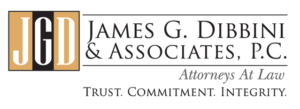What is an unlawful, illegal or wrongful eviction?
While everyone would love for the relationship between a landlord and a tenant to be amicable, the unfortunate reality is that sometimes landlords must seek to evict tenants in order to maintain a safe and profitable property. Many landlords who are fed up with a tenant but are unaware of the proper legal process run the risk of committing an unlawful eviction, which can expose the landlord to significant liability and possible criminal charges. An unlawful eviction is any form of eviction that is not performed in accordance with the established legal process. When people think of an unlawful eviction, the most obvious scenario that comes to mind involves the use or threat of physical force with the purpose of making the tenant leave. This can open the landlord up to criminal charges as well as civil liabilities, and like the rest of the examples we will discuss, is an inappropriate way to try to resolve a conflict with a tenant. A lesser known type of unlawful eviction is when the landlord engages in a course of conduct which attempts to interfere with or disturb the comfort of the tenant in their use of the unit in order to encourage the tenant to leave. Examples of this include cutting off essential services like hot water or electricity in the hope of making the tenant’s stay in the unit unbearable. These types of evictions are known as “constructive evictions” since the tenant is not physically removed, but the tenant’s right to the undisturbed use and enjoyment of the premises has been violated. If the landlord withholds an essential service that they have a legal duty to provide, and thereby make the property uninhabitable, the tenant may terminate the lease and be entitled to seek damages. An unlawful eviction can also exist when a landlord takes steps or threatens to take steps which would prevent the tenant from occupying the unit or attempting to force them to vacate, such as changing the locks on the tenant’s unit without providing them with a new key. However, this can also include tampering with the locks, removing the tenant’s door or removing their possessions from the unit. If an unlawful eviction does occur, then the tenant may call the police and bring criminal charges against the landlord. It is also possible that the tenant can seek an order from the Court directing the landlord to allow the tenant to return to the premises. In some cases, the landlord may be liable for up to three times any damages suffered by the tenant. The only way a landlord may lawfully evict a tenant is by going to court and obtaining a judgment and warrant of eviction to be executed by a local marshal’s office or another authorized enforcement officer. James G. Dibbini & Associates, P.C. is well versed in the area of landlord and tenant law. If you have any questions about what you need to do as a landlord to secure the legal eviction of a tenant, or if you think you may have been the victim of an unlawful eviction, please visit our web site at www.dibbinilaw.com or contact our office to discuss your situation and schedule a meeting.
Our office also provides legal services in the areas of:
-Cooperative Apartment & Condo Representation
-Property Management Company Support and Representation
-Commercial & Residential Real Estate Closings
-Civil Litigation
-Landlord & Tenant Law
-General Business Law
-DHCR Representation
-Zoning Issues and Variances
-Housing and Building Code Violation Matters






